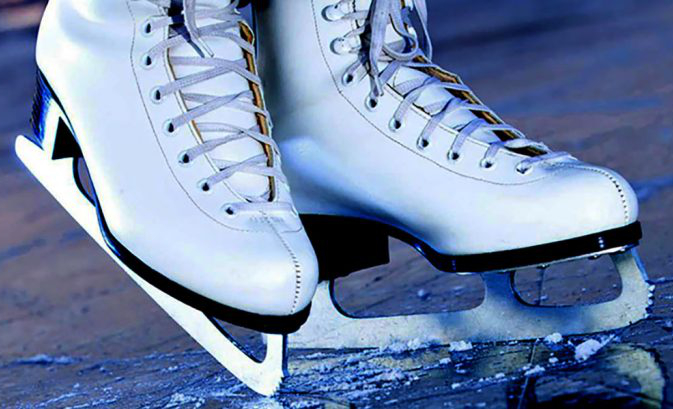 |
Proper equipment is essential to becoming skilled in most sports, and skating is no exception! Skaters cannot learn skills unless their skates fit well and support their ankles. A well thought out purchase of good skates will encourage enthusiasm and excitement in anyone learning to skate. If at anytime you have questions or concerns regarding your equipment, please consult with any of our coaches. |
Equipment
Skates
- Hockey or figure skates with laces and firm ankle support
- Leather skates are recommended, not plastic adjustable or bob skates
- Make sure the skates are well sharpened
Choosing the right size
- Wear only one pair of socks or tights – the ones you will wear when skating
- Partially unlace boot through instep and slide foot forward – toe can touch the front, but not cramped
- Stand with weight equally distributed over both feet and bend your knees – the space at the back of the heel should be no more than a pencil width
- To check if the width of the skates fit the foot walk around in the skates off the ice – they should be snug but comfortable
Helmet
- Hockey helmet MUST be CSA approved
- Face cage is not mandatory but recommended as an extra layer of protection
- Helmet should fit snug and both helmet and strap should be adjustable
- Bike, skiing and skateboard helmets will not be accepted
- For Skate Canada’s helmet policy and info page: click here
Clothing
- Waterproof pants or snow pants
- Waterproof mittens or gloves
- Avoid bulky clothes or layering as it hinders movement
- Winter jacket, sweater or turtleneck should be enough (remember, your child will be exercising)
Taking care of your skates
After your lesson is done
Dry blades and sole plate completely with a cloth and remember to ALWAYS wear skate guards when not on the ice so your skates do not get damaged.
At home, when not in use
Remove skates from the skate bag, remove the guards and leave the skates in the open so that they can air dry thoroughly, allowing the leather to breathe.
Skate sharpening
All new skates and skates that have not been skated on for a month will need to be sharpened before you skate on them. Re-sharpen skates after approximately 20-30 hours of skating. More frequent sharpening may be required, if the skater walks on concrete, rubber or carpeted surfaces without guards, if the blades are not wiped dry, or if there are nicks and rough surfaces on the edges of the blade.
![]() Tip!
Tip!
Avoid buying larger size skates for your child to “grow into”. Skates that are too loose will interfere with their skating and may actually be dangerous because of lack of support.